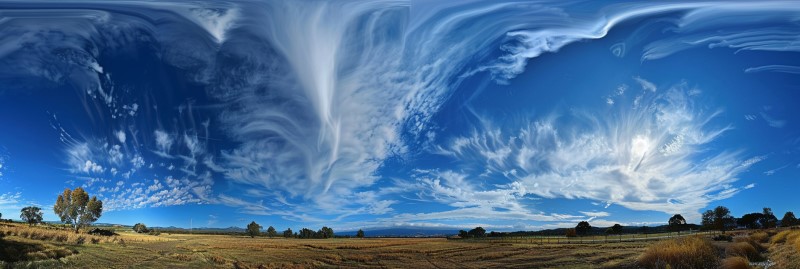KidZone Questions Kids Ask
Why is the Sky Blue?
From the serene blue of a sunny day to the kaleidoscope of colors painting dawn and dusk, the sky tells a story of light, color, and the invisible dance of particles in the air. Join us as we unravel the mysteries of this daily spectacle, uncovering the science behind the beauty and answering the age-old question, "Why is the sky blue?"

-
Introduction: A Colorful Sky
- Start with the observable fact that the sky changes colors.
- Introduce sunlight as the source of light and its role in lighting up our days.
- Understanding the Atmosphere
- Explain the atmosphere as the layer of air around the Earth, full of tiny particles and gases.
- Discuss how sunlight enters the atmosphere and interacts with these particles.
- The Journey of Sunlight
- Describe how sunlight travels to Earth and its encounter with the Earth's atmosphere.
- Introduce the concept of scattering as the interaction between sunlight and atmospheric particles.
- Air All Around Us
- Emphasize the presence of air everywhere, even though it's invisible.
- Discuss the composition of air and its significance in scattering light.
- Particles in the Air and Blue Skies
- Dive deeper into the types of particles in the atmosphere and how they affect the scattering of light.
- Explain how different conditions (like pollution or after rain) can change the appearance of the sky.
- Why Not Always Blue?
- Address why the sky isn't blue at all times, such as during sunrise, sunset, and at night.
- Introduce the concept of longer paths of sunlight during dawn and dusk, leading to reds and oranges.
- Colors at Dawn and Dusk
- Explore the changes in sky colors at sunrise and sunset, attributed to the angle of the sun and its interaction with the atmosphere.
- Discuss the role of atmospheric particles in enhancing the colors seen during these times.
- Review, from NASA:
- Review: Simple Questions and Answers
- Encourage questions and provide simple, clear answers.
- For example, "Why is the sky not blue at night?" can be answered with "At night, the sun isn't shining on that part of the Earth, so there's no sunlight to scatter and make the sky blue."
- Activities for Preschool to Grade 2
- Advanced Exploration of the Sky
for Grades 3 to 6
- Delve deeper into atmospheric science, introducing more complex concepts in a way that's engaging and comprehensible for grades 3 to 6.